LAWSUITS NEWS & LEGAL INFORMATION
MRI Health Risk Legal News Articles & Interviews
Health Canada in Gadolinium Denial
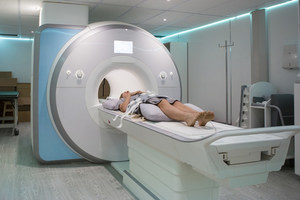 September 13, 2019. By Jane Mundy.
September 13, 2019. By Jane Mundy.Fort Saskatchewan, AB: How can a heavy metal accumulate in the brain but not be considered harmful? After undergoing seven MRI scans, all with injections of a gadolinium-based contrast agent (GBCA), Wanda Milley experienced the same gadolinium contrast dye side effects that many other patients have suffered, and have subsequently filed gadolinium lawsuits.
Read [ Health Canada in Gadolinium Denial ]
Gadolinium Dyeing Out?
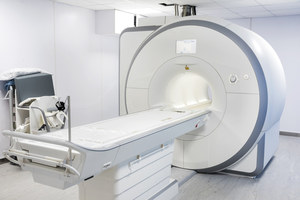 August 13, 2019. By Jane Mundy.
August 13, 2019. By Jane Mundy.MRI with Gadolinium – Better to be Safe than Sorry?
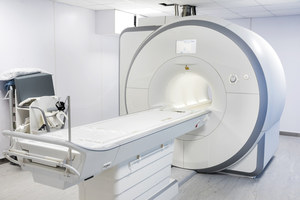 June 19, 2019. By Jane Mundy.
June 19, 2019. By Jane Mundy.“I was a Gadolinium Guinea Pig,” says Woman Diagnosed with Kidney Problems
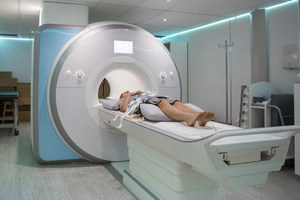 April 17, 2019. By Jane Mundy.
April 17, 2019. By Jane Mundy.Take the MRI, Hold the Gadolinium
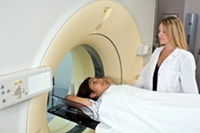 February 27, 2019. By Jane Mundy.
February 27, 2019. By Jane Mundy.Gadolinium is a clear, non-radioactive chemical compound used with patients undergoing magnetic resonance imaging (MRI) and magnetic resonance angiography (MRA). Doctors say the MRI contrast agent is part of an essential toolbox to save lives and that it is safe. But a number of MRI lawsuits filed against gadolinium manufacturers say otherwise.
For instance, the actor and martial artist Chuck Norris has another fight on his hands—this time with companies who make gadolinium-based products. His wife Gena is suffering from Gadolinium Deposition Disease (GDD) after undergoing three contrast-enhanced MRIs in a one-week period. The "Gadolinium in Humans" paper from the American Journal of Radiology says that Gadolinium Storage Condition is the excess of gadolinium in patients with normal renal function, and Gadolinium Deposition Disease occurs when a patient has an excess of gadolinium in their system, but they have normal or adequate renal function.
According to Dr. Richard Semelka, Gadoliniumn Deposition Disease (GDD) symptoms must start within minutes to one month after administration of a gadolinium-based contrast agent (GBCA). Second, the symptoms experienced by the patient after GBCA administration must be new, and not preexisting. There are now six symptoms (below) that are critical diagnostic findings for GDD, states Dr. Semelka. One of those symptoms is head pain.
“I had my first MRI last October. Two weeks later the headaches started and wouldn’t go away,” says Virginia. “They started around noon every day and got progressively worse. I’ve never had headaches like this before and they lasted for months. Then they just stopped, right out of the blue. They stopped as strangely as they started, but my shoulder and arm pain is still there.”
“I had problems with my shoulder and arm in the past, so I don’t know if it is linked to the MRI,” Virginia adds. “Physiotherapy helps but nothing helped the headaches, and I am sure that is related; these head pains were too coincidental. They went away but my gadolinium concerns are still here. I don’t know enough about it, and I don’t think the medical profession does either."
The
Virginia had this first MRI with contrast dye for breast cancer. The second scheduled MRI was to detect endometrial cancer.
“From what I understand now, once gadolinium is in your body, it stays in your body and that concerns me. I was worried so I called the hospital ahead of time and asked if I was going to get the dye,” says Virginia. “The technician said I didn’t need it so I didn’t have to arrive 90 minutes early. When I got there, however, the radiologist said I was 90 minutes late and that I was supposed to have the contrast agent – it takes 90 minutes to get into your system. Then he said, ‘We’ll just go ahead without it.’ And that worked for me.”
Virginia’s MRI did show a benign lump and it found fibroids–without using the MRI contrast dye. “I am so done with this gadolinium,” Virginia says. “As it turns out, and this is good for your LawyersandSettlements readers to know, I didn’t even need the contrast agent with this second MRI!”
The 6 main clinical criteria for Gadolinium Deposition Disease, according to Dr. Semelka are:
1. Intense burning of the skin and skin substrate. Arising in early stage (early on after GBCA): This can be an all over feeling in the body, but often may be localized to the trunk region or distal extremities.
2. Intense boring pain in bones or joints. Arising in early stage (early on after GBCA): This can be any bones or any joints. Often the joints may be peripheral but can also be large joints like the knee or hip. Any bones can have severe point pain, but rib pain is quite distinctive for the disease.
3. Brain fog. Arising in early stage (early on after GBCA): Many terms have been used for this: mental confusion sounds more scientific, but brain fog gets the point across well and succinctly. Brain fog is also a prominent feature of lead toxicity, which is another heavy metal toxicity.
4. Muscle vibrations (muscle fasciculations) and skin pins and needles/tingling (early on after GBCA). These symptoms may represent part of the same process that is causing brain fog. Muscle vibrations/twitching and pins and needles skin sensations generally reflect nerve disease (neuropathy).
5. Head pain (early on after GBCA). Headache is both a very common occurrence and shows tremendous variability. GDD sufferers describe it as a head pain, and unlike any other type of head-ache they have previously experienced. These two properties provide differentiating features for this entity. Some describe it as a burning pain and as an extreme tightness feeling (like a tight bathing cap on their head).
6. Distal arm and leg skin/skin substrate thickening, discoloration, and pain. Arising in the subacute stage (2 weeks +): This is very much like the principal features of NSF, but generally less severe. Instead of woodiness, doughiness; instead of redness, pinkness; instead of extreme joint contractures, stiffness of joints and decreased range of motion. Skin tightness is a feature of GDD as well. This symptom complex should be expected.
FDA Approves New MRI Contrast Agent
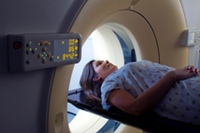 April 12, 2011. By Charles Benson.
April 12, 2011. By Charles Benson.New Gadolinium-Based Contrast Agent Approved
 March 26, 2011. By Heidi Turner.
March 26, 2011. By Heidi Turner.MRI Kidney Isn't the Only MRI Health Risk
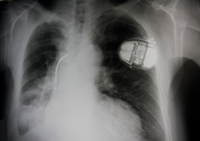 March 10, 2011. By Gordon Gibb.
March 10, 2011. By Gordon Gibb.Lawsuit against General Electric over MRI Health Risks Settled
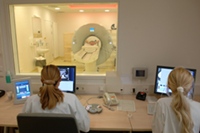 February 11, 2011. By Charles Benson.
February 11, 2011. By Charles Benson.MRI Health Risks beyond the Contrast Agent
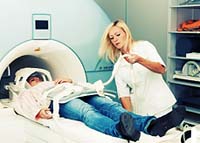 January 29, 2011. By Gordon Gibb.
January 29, 2011. By Gordon Gibb.- MRI Health Risks—Contrast Dye Burn By Jane Mundy (Jan-19-11)
- MRI Safer Than CT, but MRI Health Risks Remain for Some By Gordon Gibb (Dec-23-10)
- Mayo Clinic Gives Advice on MRI Health Risks By Charles Benson (Dec-13-10)
- MRI NSF: Patients with Renal Insufficiency at Risk By Heidi Turner (Dec-7-10)
- First Bellwether MRI Health Risk Trial Starts in January By Gordon Gibb (Nov-25-10)
- MRI NSF: Understanding What Causes Nephrogenic Systemic Fibrosis By Heidi Turner (Nov-15-10)
- New Study Examines Mechanism Behind MRI Contrast Agent Illness By Charles Benson (Nov-5-10)
- Is MRI Over-Used for Breast Cancer, Resulting in MRI Health Risks? By Gordon Gibb (Oct-27-10)
- New MRI Contrast Agent Could Work For CT Scans, Too By Charles Benson (Oct-17-10)
- "Why Was I given Gadolinium?" Asks Patient with Kidney Problems By Jane Mundy (Oct-8-10)
- MRI Health Risks: FDA Increases Warnings By Heidi Turner (Sep-25-10)
- FDA Warns of MRI Health Risks for Kidney Disease Sufferers By Charles Benson (Sep-15-10)
- FDA Requires Stronger Warnings on Some MRI Contrast Agents By Heidi Turner (Sep-10-10)
- MRI Health Risks May Extend Beyond MRI Contrast Agent By Gordon Gibb (Aug-29-10)
- FDA to Look at Gadolinium-based Contrast Agent, Known for MRI Health Risks By Charles Benson (Aug-16-10)
- MRI Health Risks: Beware the Magnetized Projectile By Gordon Gibb (Aug-9-10)
- MRI Health Risks to Kidney Patients Growing with Scan Frequency By Gordon Gibb (Aug-2-10)
- Patients with Nephrogenic Systemic Fibrosis May be Misdiagnosed By Heidi Turner (Jul-27-10)
- Understanding Nephrogenic Systemic Fibrosis By Heidi Turner (Jul-26-10)
- General Electric in Trouble over MRI Dye By Heidi Turner (Jul-20-10)
- Three Contrast Agents Associated with MRI Health Risks By Charles Benson (Jul-11-10)
- Hospitals Could Face Lawsuit after Patient Develops MRI-Related NSF By Heidi Turner (Jul-3-10)
- The Importance of Post-MRI Dialysis for Kidney Patients By Gordon Gibb (Jun-27-10)
- Florida Hospital Tests New Machine to Lessen Risks of MRI Contrast Side Effects By Charles Benson (Apr-8-10)
- MRI Contrast Side Effects "Ruined My Life" By Gordon Gibb (Mar-29-10)
- Doctors May Be Needlessly Exposing Patients To MRI Health Risks By Charles Benson (Mar-17-10)
- Pacemakers Pose MRI Risk to Patients By Gordon Gibb (Feb-23-10)
- MRI Contrast Agent Side Effects Can Be Debilitating By Heidi Turner (Feb-14-10)
- New Contrast Agent May Reduce MRI Health Risks By Charles Benson (Feb-5-10)
- MRI Health Risks Lawsuits Heating up By Jane Mundy (Jan-4-10)
- Radiologist Warns of MRI Health Risks, GE Sues for Libel By Jane Mundy (Dec-31-09)
- Emergency MRI Burns Toddler By Gordon Gibb (Dec-15-09)
- Attorney Intends to Expose Bayer, the Maker of Magnevist By Jane Mundy (Dec-9-09)
- Nation's First Nephronic Systemic Fibrosis Trial Set to Begin By Hana Silverstein (Dec-8-09)
- MRI Health Risks Lead the FDA to Reconsider Rules on Imaging Drugs By Charles Benson (Dec-7-09)
- Study Shows Risk of NSF 77 Times Higher in Dialysis Patients By Heidi Turner (Nov-29-09)
- NSF Patient Sues over MRI Contrast Agent By Gordon Gibb (Nov-19-09)
- Man Sues Hospital After Developing Nephrogenic Systemic Fibrosis By Lucy Campbell (Nov-17-09)
- $1 million in stimulus funds to improve technologies and reduce MRI health risks By Charles Benson (Nov-17-09)
- "My Brother wasn't Warned about MRI Health Risks" By Jane Mundy (Nov-15-09)
